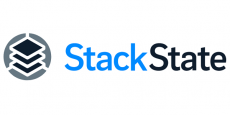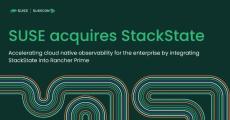|
By Dmitry Maximov
In the world of container orchestration, Kubernetes has emerged as the go-to platform for managing and scaling applications. One of the key features that make Kubernetes so powerful is its ability to intelligently schedule pods across nodes in a cluster. Node affinity is a crucial concept in this scheduling process, allowing developers to influence where pods are placed based on node characteristics.
|
By Dmitry Maximov
As a developer working with Linux systems, containers, or Kubernetes, it's crucial to understand process termination signals, particularly SIGKILL and SIGTERM. This comprehensive guide will explore these signals, their differences, and their implications in various environments. We'll delve into best practices, common scenarios, and advanced considerations to help you manage process termination effectively in your applications.
|
By Dmitry Maximov
If you've encountered the dreaded "exit code 137" error message while working with Docker, Kubernetes, or other containerized environments, you're not alone. This error can be frustrating and difficult to troubleshoot, but understanding its causes and solutions can help you keep your applications running smoothly. This comprehensive guide will delve into the intricacies of error code 137, its common scenarios, and strategies to resolve it.
|
By Dmitry Maximov
Kubernetes has revolutionized how developers deploy, manage, and scale their applications. One of its key features is the ability to scale deployments seamlessly. This article explores various aspects of using the kubectl scale deployment command, including how to scale deployments up and down, scale all deployments in a namespace, managing replica sets, and more.
|
By Dmitry Maximov
We all know that managing multiple Kubernetes clusters and their resources can be challenging. However, kubectl offers several context and namespace commands to simplify this process. This comprehensive guide will walk you through using various kubectl commands to manage your Kubernetes environments more efficiently.
|
By Andreas Prins
Ever since I joined StackState almost three years ago, I knew we were onto something. Something that could change the way engineers observe, troubleshoot, and optimize their environments. Something that would transform your understanding of your entire infrastructure. As CEO for the last 18 months, I've seen our platform evolve into the next generation, making it truly powerful for our users.
|
By Ovidiu Boc
When it comes to using (desktop) software, especially in tech, there's always that icebreaker you can use to determine whether a prospect is a more "visual" or a more "textual" user. It’s definitely not a black-or-white debate, but it's always interesting to see just how differently we’re wired as individuals at a cognitive level. In this blog post, we'll assume you lean towards being a more "visual" type of person.
|
By Allyson Barr
As modern applications and IT infrastructures become increasingly complex, the need for effective monitoring and management tools has never been more critical. Application Performance Monitoring (APM) is a comprehensive approach that provides visibility into application performance, availability, and user experience. APM is an important tool for platform engineers and developers who are tasked with ensuring that applications run smoothly and efficiently and meet end-user needs.
|
By Mohamed Elnemr
Aligning IT infrastructure with business processes is paramount in today's digital landscape. This article explores how organizations can elevate their architectural modeling by integrating ArchiMate's flow diagrams, which are initially manually created, with the dynamic, auto-discovered components from StackState's end-to-end observability.
|
By Mark Bakker
Once upon a time, in a tech company, an engineering team had the freedom to independently deploy updates and new features to a Kubernetes cluster. This autonomy helped speed up development but also led to unforeseen issues with resource management. The platform team responsible for maintaining the cluster's health noticed an increase in orphaned Persistent Volumes (PV), a piece of plug-in storage independent of other Kubernetes cluster pods.
|
By StackState
The 4 Benefits of Topology-Powered Observability and the real-world customer stories behind them.
|
By StackState
The move to the cloud creates massive opportunities to deliver great applications and experiences to customers and employees, but it also comes with a new set of complexities. These new environments, powered by containers and microservices, among others, are dynamic and ever-changing. The old ways of monitoring don't apply anymore-but the need to ensure the reliability and performance of your applications is more important than ever.
|
By StackState
IT executives are being invited to play critical, strategic roles in the enterprise. The combination of disruptive threats, transformational momentum, and the pandemic that accelerated both have thrust you into the limelight. But these same drivers have also made your job exponentially more challenging. The need for technology to play a strategic role in every nook and cranny of the enterprise has resulted in a far-flung, ever-more-complex, and dynamic technology stack - that you must operate flawlessly to deliver competitive advantage.
|
By StackState
In recent years, the concept of Observability has arisen in an attempt to address the persistent risk to a company's digital experiences and business applications as IT environments continue to become more complex and more dynamic. Relationship-Based Observability breaks new ground by adding 3 new capabilities to help companies detect, prevent, and rapidly resolve incidents. Read this white paper to learn about what's missing in your observability solutions and how you can close the gaps.
|
By StackState
A 3-Step Approach for Gaining Control in Fast-Moving IT Landscapes The ever increasing complexity in your IT landscape is diminishing your company's productivity. As a response, many teams use 'observability' to get control over the fast-moving IT landscapes. However, when IT incidents strike, actionable insights to resolve incidents instantly are still siloed. Traditional observability is falling short and still too siloed. In this white paper, you will learn how you can improve traditional observability and find the right strategy to prevent outages and crush your MTTR.
|
By StackState
According to a survey by Enterprise Management Associates, most enterprises find it difficult to find the right monitoring strategy to manage their environments. At the same time, over 65% of enterprises have more than 10 monitoring tools. These monitoring tools run as siloed solutions to support specific needs for different teams.
|
By StackState
Monitoring needs a radical rethink. The complexity and agility of today's emerging infrastructure demand a new monitoring strategy. The simple and mostly static drill-down approach of traditional monitoring tools no longer works for modern infrastructures based on containers and microservices. Take the first step towards container monitoring by downloading this guide now.
- August 2024 (2)
- July 2024 (3)
- June 2024 (4)
- May 2024 (5)
- April 2024 (4)
- March 2024 (5)
- February 2024 (5)
- January 2024 (2)
- December 2023 (3)
- November 2023 (6)
- October 2023 (6)
- September 2023 (2)
- August 2023 (4)
- July 2023 (5)
- June 2023 (3)
- May 2023 (3)
- April 2023 (1)
- March 2023 (5)
- February 2023 (2)
- January 2023 (8)
- December 2022 (4)
- November 2022 (3)
- October 2022 (5)
- September 2022 (15)
- August 2022 (3)
- July 2022 (10)
- June 2022 (5)
- May 2022 (4)
- April 2022 (7)
- March 2022 (12)
- January 2022 (4)
- December 2021 (2)
- November 2021 (2)
- October 2021 (1)
- September 2021 (2)
- August 2021 (1)
- July 2021 (1)
- June 2021 (2)
- May 2021 (2)
- April 2021 (2)
- March 2021 (4)
- February 2021 (4)
- January 2021 (4)
- December 2020 (8)
- November 2020 (1)
- August 2020 (1)
- July 2020 (1)
- June 2020 (1)
- May 2020 (1)
- April 2020 (1)
- March 2020 (1)
- February 2020 (1)
- December 2019 (1)
- November 2019 (2)
StackState is the only observability company with a platform that combines topology with existing monitoring data over time. Our topology-powered approach provides the most complete picture of the state of your stack and the intelligence you need to quickly find, fix and prevent problems. StackState improves the performance and reliability of your critical business services in complex hybrid, cloud and container environments.







